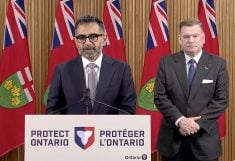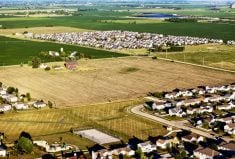The creation of a national food policy for Canada is a daunting task, full of practical and political pitfalls — likely why no federal government has tackled it before to any extent.
I recently waded through the summary of public comments on a food policy released in early September by Agriculture and Agri-Food Canada. It was certainly wading, full of the diverse opinions one would expect on a subject so integral to life and therefore so tied to one’s life experience and politics.
My first reaction was how overwhelming the task will be. There are so many areas that need to be addressed that to bring them together into one over-arching policy is a challenge. There’s a reason that food and farming touch so many different government departments. It involves health, economic development, industry, environment, indigenous peoples and of course agriculture and agri-food ministries.
Read Also

Canada seventh-most influential country on agri-food
Report from Dalhousie University and MNP shows Canada ranks seventh among G20 countries on agri-food influence.
It’s still worth doing, for numerous reasons.
The most important, from a farming community perspective, is the chance that a food policy can bring together numerous government departments so that policy can be hashed through and be more cross-departmental and nuanced before it hits the public.
So, the messaging and policy on neonic insecticides, for example, could be more vetted through all levels of government — health, agriculture, industry, before it hits the public and is presented as a fait accompli.
Better conversations on food across government should also involve farmers and farmer groups, making lobbying more efficient. and making the case to government more efficient.
Improved cross-ministry communication on agriculture can also help with the conversations that are so difficult to have with consumers. Discussions with food groups and organizations, driven by the mutual goal of a food policy have already been fruitful, I’ve heard. Being pushed together by the food policy has been good for farm groups and those working on food security.
Moving beyond entrenched ideology, both on the farming and the food side of the argument can help to solve problems for both.
I know this is an optimistic view. I see the old divisions played out in the food policy public consultation results. There’s an underlying current of encouraging small and medium-sized businesses, without necessarily looking at the economics of blanket encouragement of certain business scale and arrangements. Is the father and daughter who farm 2,000 acres in Ontario because they can with modern technology and a bit of other family seasonal help a large business? By capitalization maybe, but by investor number and employee number, not at all.
The next steps in the food policy will likely be more focused on the four main topics addressed: food security, health and food safety, environment and economic growth. That means time to individually work on those areas. For farmers, that means the economic growth file, Ron Bonnett, president of the Canadian Federation of Agriculture told me. It also means being engaged in the environment file.
Farmers need to defend the ability of farmers and the sector to be an economic driver and to grow. It’s integral not only to the sector, but also to rural communities. Local food systems are a good goal and have a significant role to play, but the ability of farmers to compete hard in a global market must not be watered down. As the federal government has said, farm sector economic impact is widespread across the country and affects many different segments of the population.
Falling back into traditional silos is a risk. I’ve watched the sides of the silos continue to grow over the past decade. The food policy is the first chance I’ve seen in many years to tear some of them down.
The other important work being done by the food policy process is addressing the critical challenges that many indigenous communities have in relation to food. Solving the food cost and quality problems of those communities is something a country like Canada with our vast food resources needs to solve. It seems to be getting a priority in the food policy and that’s a good thing.















